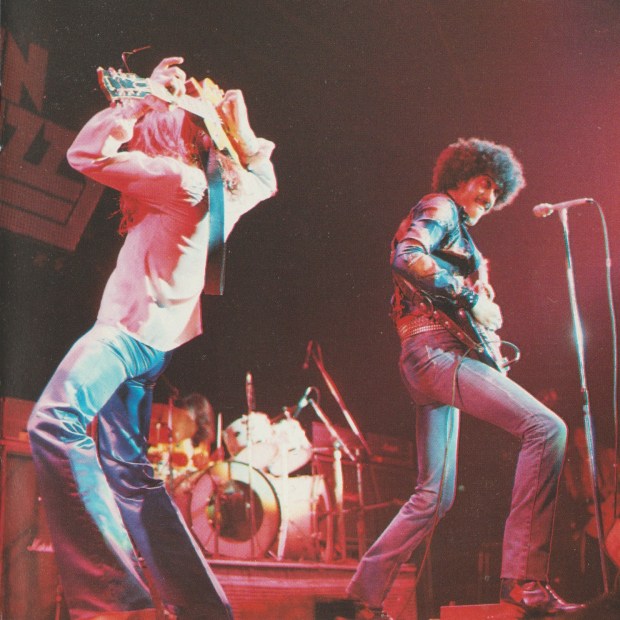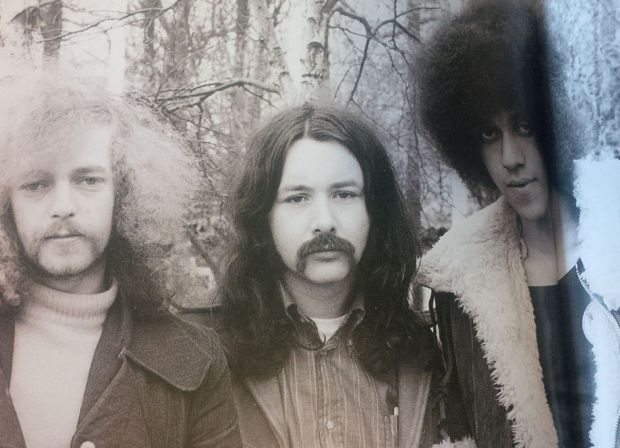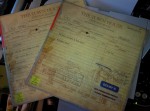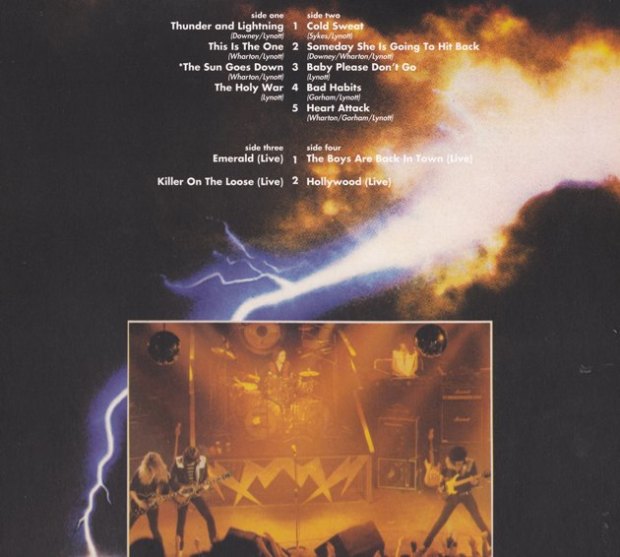 REVIEW: Thin Lizzy – Dedication – The Very Best of Thin Lizzy (1991 Polygram North American version)
REVIEW: Thin Lizzy – Dedication – The Very Best of Thin Lizzy (1991 Polygram North American version)
It might not be the best introduction to the most underrated classic rock band of all time, but it was my introduction. Dedication was a 1991 Thin Lizzy compilation that was buoyed by the unreleased song “Dedication” which was released as the radio single. There’s nothing wrong with the “new” track, except it wasn’t supposed to be a Thin Lizzy song. Phil Lynott recorded the song in 1985 for his new band Grand Slam. Scott Gorham and Brian Downey replaced the original instrumentation leaving Phil intact. And that’s fine. “Dedication” sounds slightly unfinished but it also sounds like what Thin Lizzy might have been doing had they carried on.
These kind of extra songs usually get spotlighted at the front of the album, or left at the end to whet the appetite. On Dedication, it goes last, leaving the compilation to ascend in chronological order. Is that the best way to approach listening to Thin Lizzy? While many sets go that route, it leads to a very uneven playing experience. Early Thin Lizzy was much more folksy, and dare I say it, just not as good. It certainly had some excellent tunes, and some of the better ones are showcased here. “Whiskey in the Jar” is an actual folk traditional, rocked up and made unforgettable by that Eric Bell guitar hook. That’s followed by the firecracker “The Rocker”, just shy of three minutes but every one of them shockingly great.
Original guitarist Eric Bell left the band after three albums due to exhaustion, and the band was beefed up to a four-piece with Brian Robertson and Scott Gorham taking his place. It took a while for the albums to really catch up with the talent. On CD it’s a lot of slow material before we get to the more rocking stylings of the Thin Lizzy that you know and love. From 1974’s Nightlife we have “She Knows”, “Still in Love With You”, and “Showdown”. A lot of ballads and blues and not a lot of fire. The guitar work is sparkling but the songs are not yet as astounding as they would yet become. Another ballad, “Wild One” from Fighting (1975) is one of the best of the batch. It is bookended by two rockers, “Fighting My Way Back” and the Bob Seger cover of “Rosalie”. Both are tracks you don’t want to live without.
Part of (but only part of) Phil Lynott’s genius was bringing Gorham and Robbo (and later others) together as a unified guitarmony duo. The next batch of classics really hammer this home. “Jailbreak”, “The Boys are Back in Town”, “Cowboy Song” and “Don’t Believe a Word” are the embodiment of what people think of when they picture Thin Lizzy. The driving beats, the hooks, the dual solos, the poetic lyrics — it’s all there in what might be considered Lizzy’s peak era.
Brian Robertson left the band shortly after, and doesn’t appear on “Bad Reputation” or “Dancing in the Moonlight”, but Gorham picked up the slack in the studio and rendered these as two more stone-cold classics. “Bad Reputation” covers the driving side of the band while “Dancing in the Moonlight” is funky, light romantic storytelling. Truly excellent songs even without Robbo.
The Gary Moore era follows with “Do Anything You Want To” and “Waiting For An Alibi”, two more excellent Lizzy classics from the underappreciated album Black Rose. Moore lasted only for one album, and his successor Snowy White for two more. Snowy is only heard on one track here (“Chinatown”) and the man that replaced him (John Sykes) is heard on none! So another failing of the Dedication album is a sudden drop-off at the end, leaving out important songs. “Chinatown” is excellent at least, but so is “Hollywood” and “Renegade”, yet they are not here.
Yes, too many songs were left off Dedication because you couldn’t get ’em all on a single CD. Johnny The Fox (possibly their best record) is an album that isn’t given enough time here, along with Black Rose. And to have no Sykes? Unjustifiable.
Fortunately the last song “Dedication” is better than expected, sounding like Thin Lizzy 1991, beefy and tough. It doesn’t sound like Lizzy ’75 or Lizzy ’83. But it does sound like Lizzy because Phil Lynott’s voice tends to do that. Scott Gorham does a decent job of replicating all the guitar excitement himself (he’s had to do it before). The track, written by Lynott and Grand Slam guitarist Laurence Archer, had one of those guitar hooks well suited to the Lizzy canon. Gorham and Downey did it justice enough.
Dedication is not enough Thin Lizzy but it’s enough to get your feet wet. Although it’s a slow starter it will eventually get you interested enough to try more. It worked for me and it’ll work for you.
3.25/5 stars







































 The New Day EP is here in its completion, containing some great songs. The mournful ballad “Dublin” and “New Day” are both great songs. Interesting is “Old Moon Madness”, a workout that sounds like Thin Lizzy meets Captain Beefheart without the growling vocals. “Things Ain’t Working Out Down At The Farm” is the final tune from the New Day EP, another decent track. What’s with Phil’s obsession with farmers? “Return of the Farmer’s Son” is another song title on the album itself….
The New Day EP is here in its completion, containing some great songs. The mournful ballad “Dublin” and “New Day” are both great songs. Interesting is “Old Moon Madness”, a workout that sounds like Thin Lizzy meets Captain Beefheart without the growling vocals. “Things Ain’t Working Out Down At The Farm” is the final tune from the New Day EP, another decent track. What’s with Phil’s obsession with farmers? “Return of the Farmer’s Son” is another song title on the album itself….





